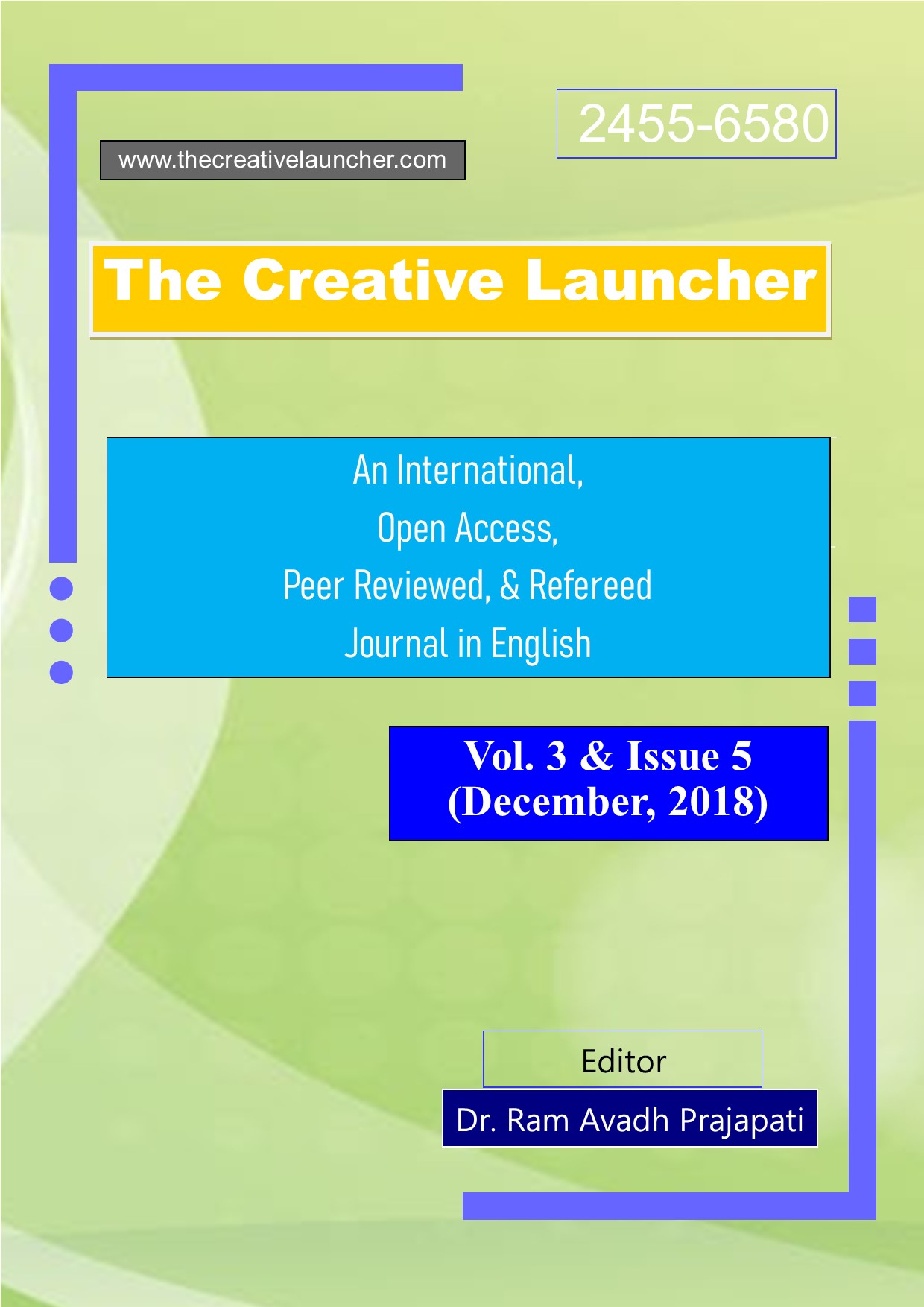The African Legacy: Influence of Myths in Alice Walker’s Novels
Main Article Content
Abstract
Walker positions herself as a writer who boldly acknowledges her African ancestry. Africa with its indigenous practices, rituals, myths and folklore became the raw material for Walker’s narratives. The paper titled “The African Legacy: Myths in Alice Walker “analyses the myths that form a key constituent in Walker’s narratives. The Sacred Serpent Burial Ground described in Meridian echoes the holiness attributed to serpents by African tribes. In Possessing the Secret of Joy, Walker exposes the practice of female genital mutilation that had been validated by the Dogon creation myths which propagate the message that humans become complete and unisexual beings only after circumcision. The African belief that ancestors are responsible for charting lives become the theme of Walker’s novels, The Temple of My Familiar and By the Light of My Father’s Smile.
Downloads
Article Details

This work is licensed under a Creative Commons Attribution-NonCommercial-NoDerivatives 4.0 International License.
References
Walker, Alice. The Third Life of Grange Copeland. 1970. New York: Harvest, 2003. Print.
---. Meridian. 1976. New York: Pocket, 1986. Print.
---.and PratibhaPramar. Warrior Marks: Female Genital Mutilation and Sexual Blinding of Women. San Diego: Harcourt Brace, 1981. Print.
---. The Temple of My Familiar. 1989. New York: Pocket, 1990. Print.
---. Possessing the Secret of Joy. 1992. New York: Pocket, 1993. Print.
---. By the Light of My Father’s Smile. 1998. New York: Ballantine,1999. Print.
“African Creation Myths”.mythome.org. 22 Jan 2009.Web.12 May 2012.
“African Women in African Civilization”. afrikaneye.wordpress. Web.24 May 2012.
“Creation Myths in Africa”.bibliotecapleyades.net. February 2006.Web. 14 July 2011.
Brisibe, Annie “The Pains of Female Genital Mutilation: The Myths the Cast Out”.ndwj.kabissa.org. March 2001. Web. April 2003
Eller, Cynthia. The Myth of the Matriarchal Prehistory: Why an Invented Past Won't Give Women a Future. Boston: Beacon P, 2000. Print.
Frazer, James. The Golden Bough. A Study of Magic and Religion .Abr. edn. London: Macmillan, 1963 . Print.
Frye, Northrope. Anatomy of Criticism: Four Essays. Princeton: Princeton UP, 1971. Print.
Gates, Henry Louis, Jr. The Signifying Monkey: A Theory of Afro-American Literary Criticism. UK: Oxford UP, 1988. Print.
Lévi-Strauss, Claude. Structural Anthropology. Trans. Claire Jacobson. New York: Basic, 1963. Print.
Lewin, Lawrence W. Black Culture and Black Consciousness: Afro American Folk Thought from Slavery to Freedom. NY: Oxford UP, 1977. Print.
Lynch, Patircia Ann. African Mythology A-Z. 2 nded. New York: Chelsea, 2010. Google Book Search. Web. 12 March 2012.
Magaulick, Mary. “What is Myth?” faculty.de.gcsu.edu. Web. 3 January 2011
Morford, Mark P.O., Robert J. Lenardon. Classical Mythology. USA:Longman, 1995. Print.
Parrinder, Jeoffrey. African Mythology. London: Hamlyn, 1967. Print.
Schrempp, Gregory. Magical Arrows: The Maori, the Greeks, and the Folklore of the Universe. Madison: The U of Wisconsin P, 1992.Print.

